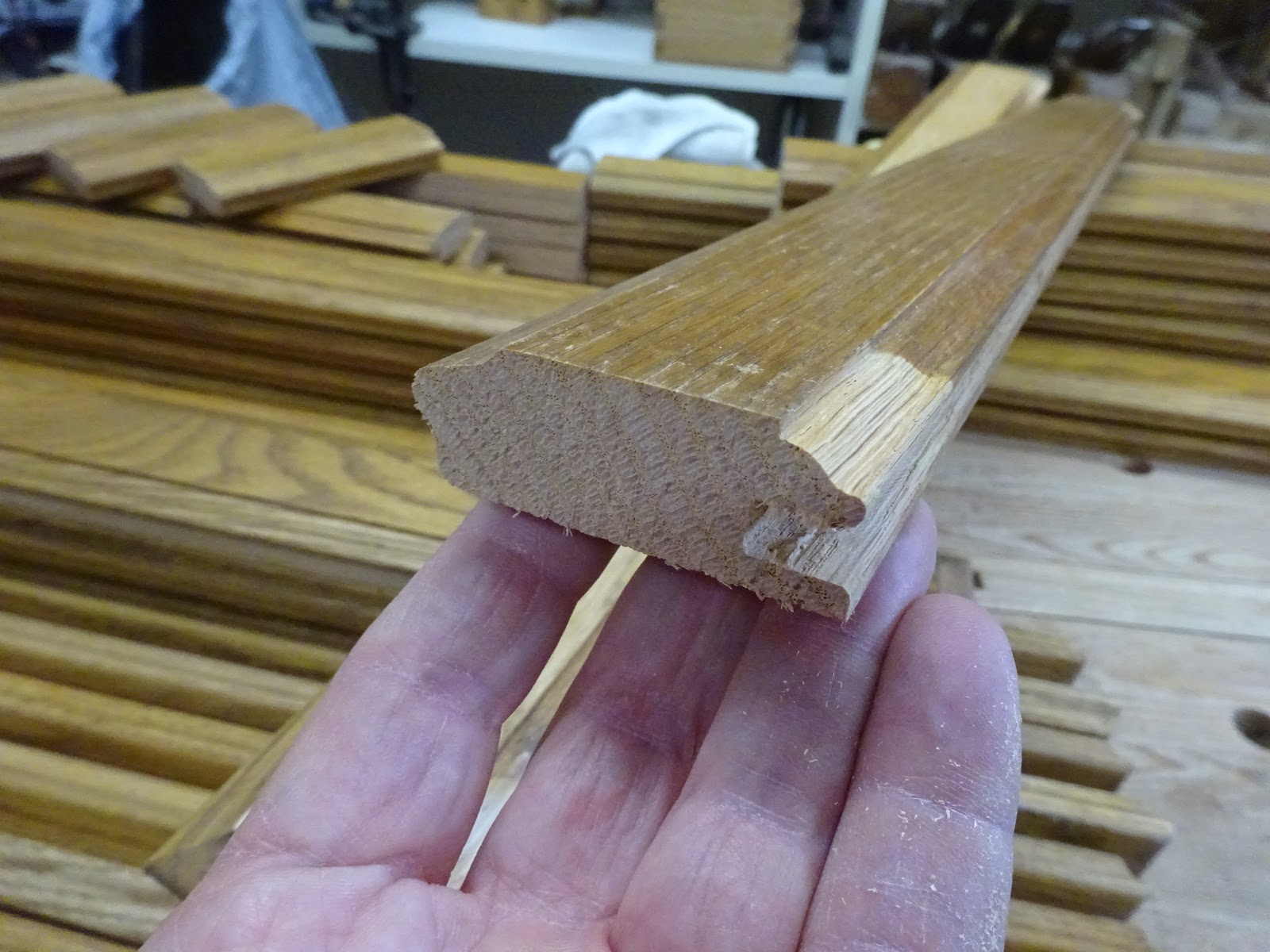When a neighbor offered me the old wood from the kitchen they're remodeling, the masochist I am, I jumped at it. These townhouses were built in the 80's and oak was generally what was used then. I have a hard time turning down free wood, but maybe those days are numbered.
 |
| Rails and stiles from 15 doors |
 |
| Face frame rails and stiles from three cabinets |
There were also a couple of drawer fronts. This is a lot of wood to clean up. All the door rails and stiles have molded outer edges, as well as molded & grooved inner edges. Many of the face frame rails have pocket holes at the ends where they mate with stiles. And all these things need to be removed.
 |
| Molded end and groove shown |
I woke up this morning thinking how best to cut the ends efficiently. In December of 2020 I wrote about my Stanley #2358A miter box and saw. Since being refurbished, it has sat on a high shelf in the shop.
 |
| So lonely up there all by itself |
 |
| And the saw has been hanging on the wall since then. |
I'd give it a permanent location in the shop if I had more space, but I don't. Finally I have a good use for the thing where it's worth the trouble to take it down from the shelf!
 |
| Stanley #2358A ready to make a cut |
 |
| Half way through |
What a joy this thing is to use. Each cut took about 15-18 strokes of the 30" saw. It was still perfectly sharp from when I fixed it up.
 |
Molded end cut off
|
Now I just have to clean up the grooved and molded edges of all these pieces. A bandsaw sure would be handy for this. Anybody out there have any suggestions on how to efficiently clean up those long edges? I've tried the hatchet, followed by scrub plane and smoother, and that works, but takes a bit of time. Anything I'm not thinking of while using hand tools only?
UPDATE: Someone from the facebook unplugged woodworkers group suggested using a drawknife and that really did the trick. I followed the drawknife with a scrub plane and smoother. It still takes some time, but it's more fun and does a nice job.
 |
Drawknife with workpiece in the vise. Later I brought down my vise-mounted
shave pony and that worked great. |









there is always a catch, isn't it?
ReplyDeleteHa! So true. Just spent the afternoon using a drawknife, scrub plane and smoother to get those grooved edges (some of them, not nearly all!) to flat.
DeleteAs I don't have a draw knife I would have tried a spokeshave.
ReplyDeleteHadn't considered a spokeshave. But unless there is such a thing as a scrub spokeshave, it seems like it would be no faster than a regular plane (haha).
DeleteI had a similar issue with tongue and grooved boards that were somewhat beaten up. I used a number of stop cuts and split off the unwanted portion with a chisel - bevel down. First a little to watch the grain, then more aggressively. On a board of softer wood - poplar- i just scored lines with a cutting gauge and then used a wide chisel in the s ored line. Worked better than I thought.
ReplyDeleteThanks for the comment Alfred. Fortunately the grain on this oak has been (reasonably) easily readable. Only a couple of boards had the grain change over their length. The thing about the drawknife method is that the last 4-5 inches need to be held in the shave pony while I shave most of the board, and I have to turn the board around to get to those 4-5 inches. And that presents the grain diving as I use the drawknife towards me. But I've just been careful not to split off too much and it's worked out fine. In the cases where it's diving too fast, I just use the scrub plane.
Delete